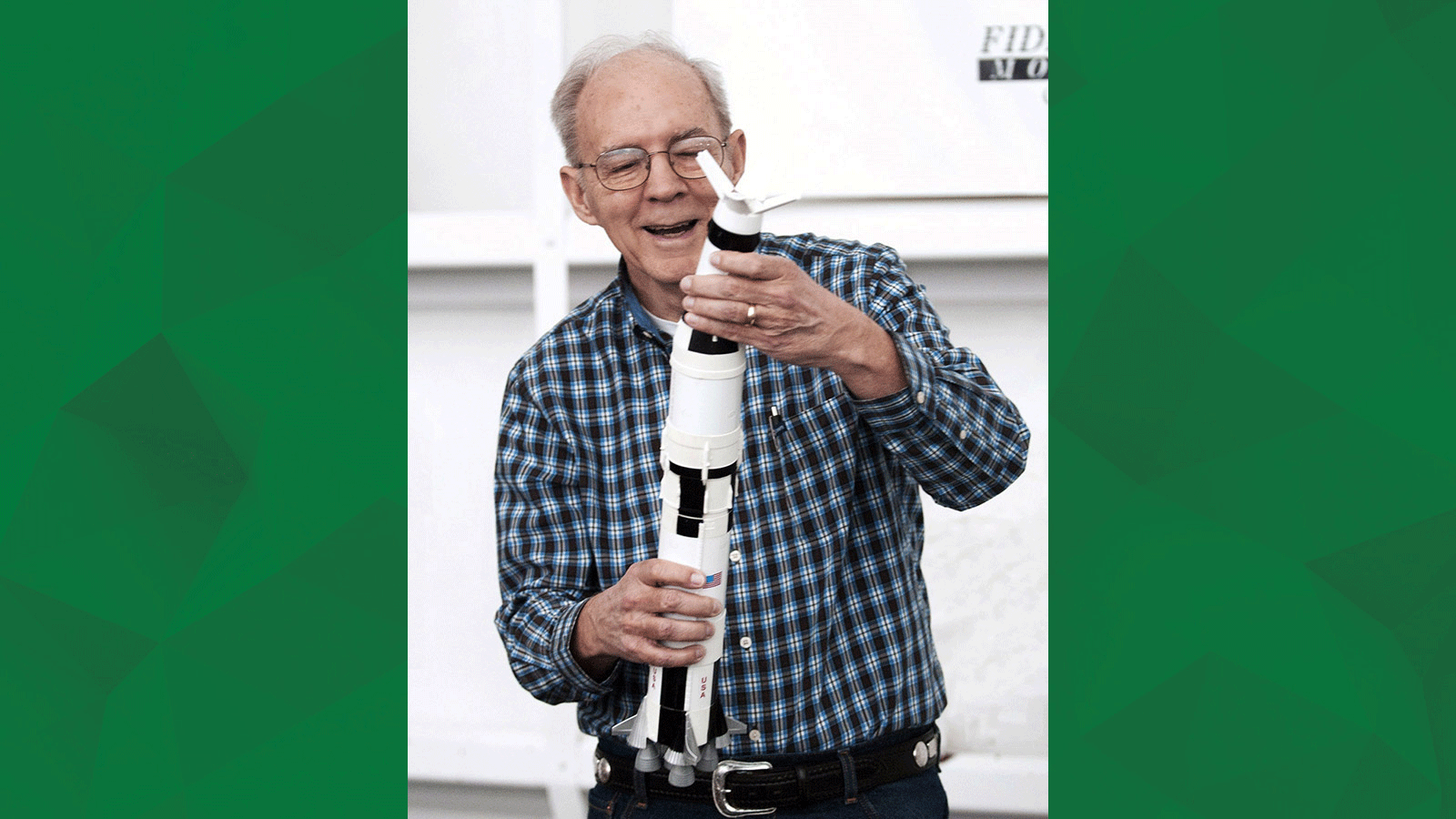OBU Alumnus Cooper to Discuss His Work on NASA Moon Missions Oct. 14
October 9, 2019
OBU’s Hurley College of Science and Mathematics will welcome Don Cooper, OBU class of 1960, to campus for two lectures Monday, Oct. 14. The first general lecture, “Apollo: How We Went to the Moon,” will be held at 10 a.m., while the second mathematical lecture, “Deriving the Equations for the Saturn V Guidance System,” will be held at 1 p.m. Both lectures will take place in the Tulsa Royalties Auditorium in Bailey Business Center.
Cooper graduated with honors from OBU in 1960 with a degree in physics and minors in mathematics and chemistry. He attended graduate school at the University of Alabama.
He then went to work for the Army Ballistic Missile Agency in Huntsville, Alabama, as a member of the Advanced Design Laboratory. They designed a new missile for the Army that was deployed to NATO.
In 1961, he transferred to NASA as a mathematician at the George C. Marshall Space Flight Center in the Guidance Theory Section, helping to create the trans-lunar targeting equations for the manned Apollo missions. NASA archives contain a number of his publications. In 1965, he moved to Houston and worked on the Apollo missions at the Johnson Space Center. He also worked on the operations team during the Apollo 13 crisis, performing valuable calculations which ultimately brought the crew safely back to Earth.
In 1972, he joined TRW Controls as a software project manager to create control systems for electric utility companies. He left TRW to start FD Systems to sell and install inventory control software. After 15 years, he sold FD Systems and joined Professional Compounding Centers of America as the Chief Information Systems Officer.
Since retiring in 2002, he has volunteered to speak at schools and libraries about the moon landing and to show how a practical application of calculus created the Saturn V Apollo guidance equations.
He has received commendations from the Army, NASA, TRW and OBU, and was awarded the Presidential Medal of Freedom as a member of the Apollo 13 operations team.
During the general lecture at 10 a.m., Cooper will use a Saturn V rocket scale model, a slideshow and a voice recording of the lunar landing to share his experience in creating the technology to launch Apollo 11. He will also tell how his team contributed to bringing the Apollo 13 crew safely home in 1970. His presentation appeals to all ages.
During the 1 p.m. lecture, which will be a more technical mathematical session, Cooper will discuss the Saturn V’s onboard guidance equations, the Iterative Guidance Mode (IGM), and how it considers variables and steers the Saturn using the least fuel possible. He will discuss how he and his NASA colleagues created the Saturn guidance and trans-lunar targeting equations, which were derived by integrating the equations of motion for a rocket going into earth orbit along a minimum fuel trajectory. Several approximations and observations from Calculus of Variation were used to obtain the solution.
During the technical talk, he will outline the derivation of IGM, explain the assumptions and show how geometry, algebra, calculus and classical mechanics work together to produce the Saturn V guidance equations. He will also explain the hypersurface targeting used for the trans-lunar burn from earth orbit.
In both talks, Cooper has a powerful theme he intends to convey to all audience members.
"My objective is to emphasize that education is essential and to show how math and physics are used to solve real world problems," he said.